Climbing Mont Blanc; Everything You Need To Know
I’m trying to become the first person to visit every country in the world, reach the North Pole, the South Pole and climb the Seven Summits (the highest mountain on every continent), known as the explorers grand slam, and it’s proving a little more complicated than I thought! First of all, what even are the Seven Summits? There’s the Bass list (where Mount Kosciuszko (which I ‘climbed’ last year) in Australia rather than Puncak Jaya, in Indonesia, is used), the Reisner list which is the opposite, and the issue of Mount Blanc or Mount Elbrus being Europe’s highest point. Last year, I climbed Mount Elbrus, but to avoid any doubt with my Seven Summit quest, I decided I should go about climbing Mont Blanc too, to clear up any doubt. And besides, it’s fun, spectacular scenery, and good training and practice for other mountains. So in August 2020, I did just that.
If you want to read a detailed day-by-day account of my successful Mont Blanc climb, you can read that HERE. The rest of this article is all the general info you need to know when you’re thinking about Climbing Mont Blanc.
Table of contents
- Climbing Mont Blanc; Everything You Need To Know
- Mont Blanc Itinerary for Climbing Mont Blanc
- Is Climbing Mont Blanc Dangerous?
- Do You Need A Guide for Mont Blanc?
- What is the Comfort Level Like?
- Is It Difficult to Climb Mont Blanc?
- How Much Does it Cost to take on Climbing Mount Blanc?
- When’s the Best Time to try Climbing Mont Blanc?
- What Gear Do You Need to take on Climbing Mont Blanc?
- Where is Mont Blanc? And How to Get to Mont Blanc
- What’s the Weather Like when climbing Mont Blanc?
- How High is Mont Blanc?
- Would You Recommend Setting a goal to Climb Mont Blanc?
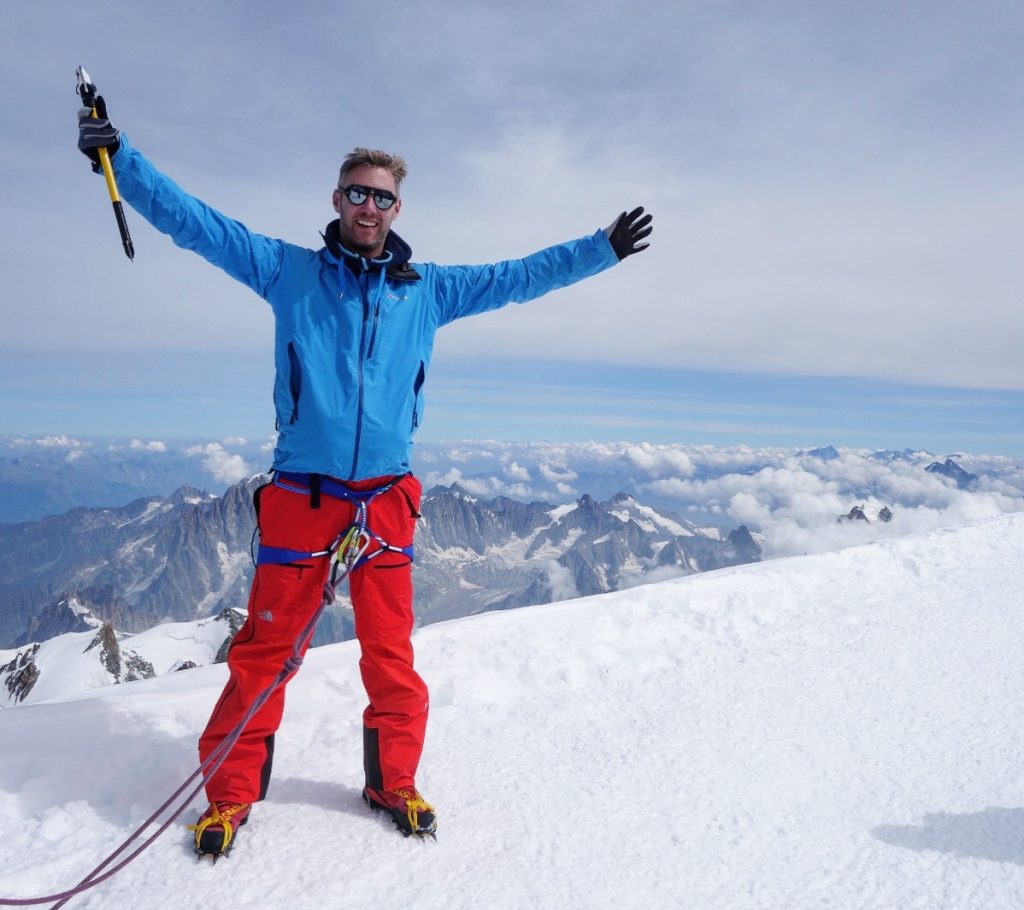
Mont Blanc Itinerary for Climbing Mont Blanc
A Mont Blanc expedition normally takes 6 nights/7 days. This is broken down as follows:
Day 1: Arrive and sleep in Chamonix, France.
Day 2: Begin an acclimatisation hike, sleep in a mountain hut at altitude
Day 3: Complete the acclimatisation hike, sleep in a mountain hut at altitude
Day 4: Back to Chamonix, get supplies for the Mont Blanc climb, sleep in Chamonix.
Day 5: Begin the ascent of Mont Blanc, sleep in a mountain hut
Day 6: Finish climbing Mont Blanc, reach the summit, come back down, sleep in a mountain hut.
Day 7: Hike to ground level, back to Chamonix. Celebrate!
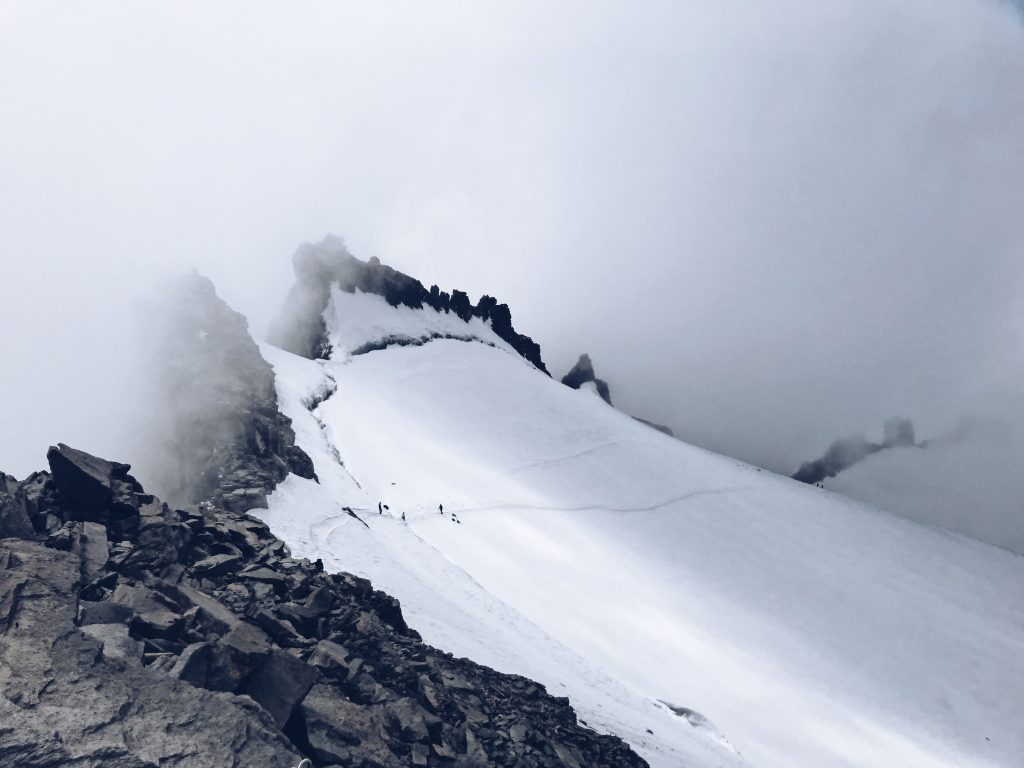
Is Climbing Mont Blanc Dangerous?
Mont Blanc summit is 4,810m (15,780 feet) so while not being as crazy tall as some Himalayan peaks, it’s certainly high enough to get altitude sickness. It’s worth noting that the Mont Blanc massif averages nearly 100 fatalities a year. A published estimate suggests there have been 6,000 to 8,000 alpinist fatalities in total, more than on any other mountain globally!
Due to the death count, and the altitude then, it’s highly, highly recommended that you acclimitise before attempting to summit Mont Blanc. The actual climbing of Mont Blanc can be done in 2 days (3 is more comfortable though), but you should spend at least 2 nights at altitude directly before attempting to summit. With this in mind, we climbed Italy’s highest peak, Gran Paradiso, in the lead up to summiting Mont Blanc. At around 4,000m it’s not too tough, but the mountain huts are gorgeous, and the views are unreal.

Do You Need A Guide for Mont Blanc?
Unless you’re a highly experienced mountaineer, then yes. If you don’t have experience with short ropes, long ropes, ice axes etc, then absolutely get a guide. Mont Blanc is no joke. Fitness-wise, it’s tough but very doable. But at some points, you’re scaling steep cliff faces, whilst near the summit, you’re walking along ridges with pretty steep drops. You also spend time traversing glaciers with deep crevasses, so unless you have experience with this stuff, get a guide. Don’t be a statistic!
I climbed Mont Blanc with a group of friends, and we used Mountain Tracks for our climb. There were 5 climbers in total, and for our acclimatisation trek we had 2 guides, whereas on the Mont Blanc climb we had 3 guides, for 5 of us. More than that, one of the guides has created a new route to summit Everest, while another had been over 8,000m in the Himalayas. These guys had the power to put us at ease, and it was so, so reassuring knowing we were in experienced hands. Having now successfully climbed Mont Blanc, I still don’t think I’d do it without a guide. If the weather turns, or if there’s an accident, you need people who have been on mountains for years to help you out of there. Mountain Tracks has that, and I couldn’t recommend them highly enough.

What is the Comfort Level Like?
In a word, luxurious! If you’ve climbed on multi-day expeditions in Argentina, or the Himalayas, or in Russia, you’ll be used to small tents, bland food and cold conditions. You have to earn your experiences wth grit and will-power. But here, welcome to the Alps. Everything is a lot more organised, a lot more comfortable, and a lot safer too. For a start, Chamonix must be the most beautiful starting town for any climb on the planet. Secondly, you spend a night in the middle of the expedition back in a hotel in Chamonix where you can shower, shave and eat at a restaurant.
Even when you spend your 4 nights in mountain huts, whether in Italy or France, the huts are beautiful. They look like chalets parked up a mountain. Excellent food, comfortable, warm beds. Charging points, 4G signal a lot of the way. Ignore the $9 coca colas, and $7 water, and you’ll be loving life up the mountain. So yes, climbing mountains doesn’t get more comfortable than Mont Blanc.
That being said, the actual hike is not easy. It’s long, and Summit day can easily be 12 hours+ depending on fitness. So while the standard of huts and the expedition length etc is super comfortable, don’t expect to waltz up the mountain. You still have work to do to get up there!

Is It Difficult to Climb Mont Blanc?
First of all, you need the weather to be good for you. The success rate on Mont Blanc is roughly 65%. That’s due to weather, altitude and fitness. Overall though, in terms of difficulty, I’d give it a 6/10.
Fitness-wise, despite my skinny-fat frame, I’m quite fit (believe it or not!). In April this year, I completed 6 marathons, in 6 days, across the Sahara at the Marathon Des Sables. So, out of ten, for how strenuous climbing Mont Blanc is, I’d say 4/10.
Technically, this is no easy walk-up Kilimanjaro. As you climb, most of the time you’re roped to your guide/co-climbers. You’ve got quite sheer cliffs to scramble up with your hands. You walk across sharp mountain ridges, and around glacial crevasses. So technically, it’s probably a 6/10.
Scariness-wise, now we’re talking! I’m pretty scared of heights, so this for me was a solid 7/10 for scariness! Sheer drops, steep cliffs. Roped in, but irrational fear doesn’t care. It made the summit even sweeter though!
So all-in-all, fitness combined with scariness and technique, I’d give Mont Blanc a 6/10 difficulty rating. Very, very possible for most active people.

How Much Does it Cost to take on Climbing Mount Blanc?
Don’t cut corners on mountains. Our guided tour was 2,250GBP ($2700USD) for a week. That included pretty much everything apart from snacks for lunch. If you need to rent gear, factor in another couple of hundred dollars too.
When’s the Best Time to try Climbing Mont Blanc?
What Gear Do You Need to take on Climbing Mont Blanc?
Mountain gear can be expensive, so first of all, if you don’t have anything, don’t worry. You can rent it all in Chamonix. I wrote a detailed Mont Blanc Packing List here though, check it out.
Where is Mont Blanc? And How to Get to Mont Blanc
It’s in Eastern France, on the border with Italy and just 45 minutes from the Switzerland border. The main town that everyone uses for access points to Mont Blanc is Chamonix, and it’s beautiful, with views of Mont Blanc sitting right behind the picturesque town.
The nearest Airport for Mont Blanc is Geneva (GVA) airport in Switzerland. You can fly in there, and from the airport, there are 20Euro buses every hour fro the airport to Chamonix bus station, the journey takes 75-90 minutes. Once in Chamonix Bus Station, you will find most hotels are walking distance away and you’re ready to get started!
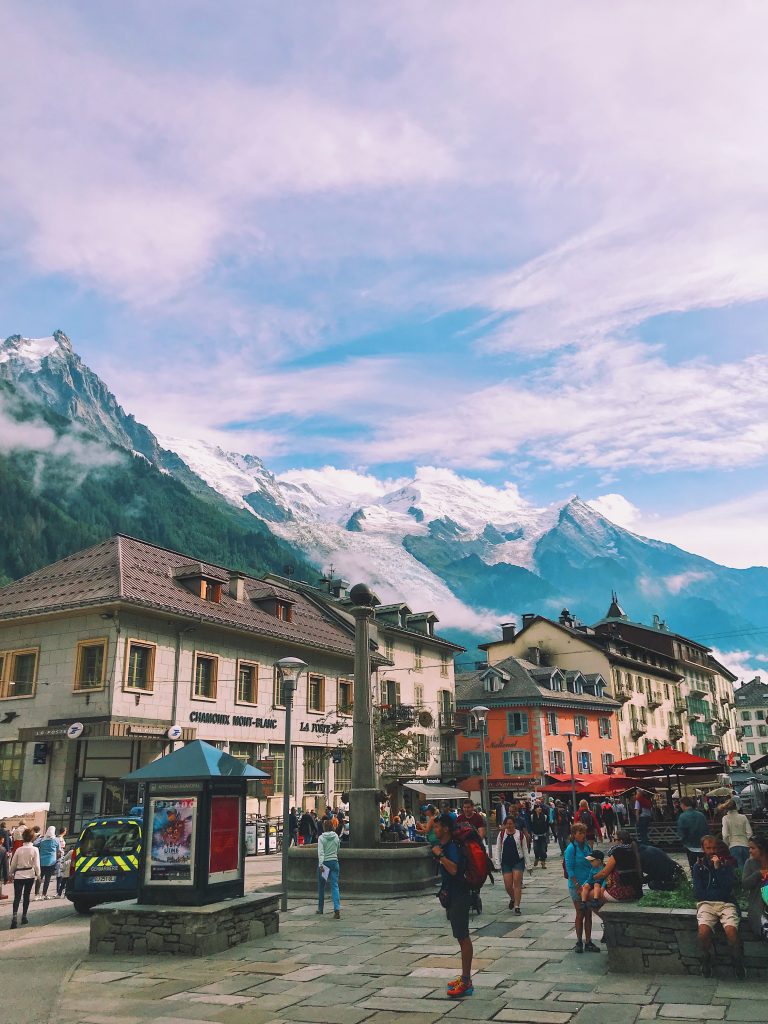
What’s the Weather Like when climbing Mont Blanc?
Assuming you’re going to be climbing Mont Blanc in July and August, expect the weather to be nice as you climb and cold on top! During my climb, the first half of the days I was in trekking pants, light boots and t-shirt (and maybe a fleece when the wind picked up). Summit day though, that gets cold. Expect temperatures as low as -15 on the summit. For me, it was about -8. The weather was clear, but we had snow at night.

How High is Mont Blanc?
Mont Blanc summit is 4,810m (15,780 feet)
Would You Recommend Setting a goal to Climb Mont Blanc?
Yes! It was one of the best adventure travel weeks of my life. It’s doable for people with little-to-no mountain experience (in fact one of our group had never climbed a mountain before), but treat it with respect. Try to do a little training in the lead-up if you’re not in shape, even a couple of months of running every other day would be great. The level of comfort was amazing, the views in the Alps are second-to-none, the communication, level of guides and itinerary with Mountain Tracks was perfect, and to sit atop of Mont Blanc, looking down on Europe, it’s worth every bead of sweat it took to get up there. Good luck!
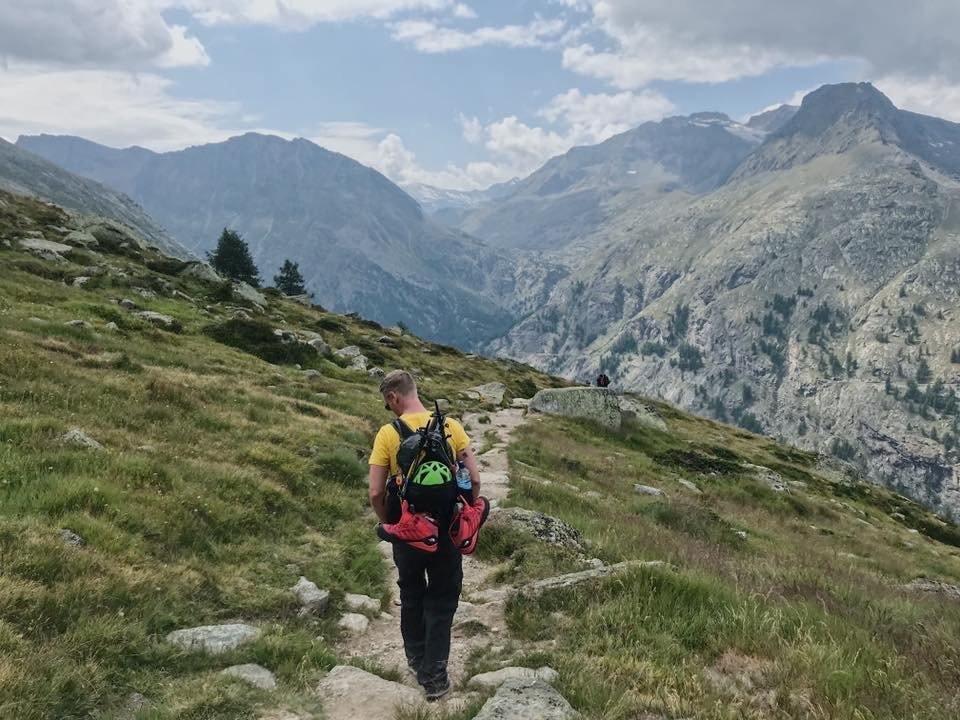
Remember, never travel without travel insurance! And never overpay for travel insurance!
I use HeyMondo. You get INSTANT quotes. Super cheap, they actually pay out, AND they cover almost everywhere, where most insurance companies don't (even places like Central African Republic etc!). You can sign-up here. PS You even get 5% off if you use MY LINK! You can even sign up if you're already overseas and traveling, pretty cool.
Also, if you want to start a blog...I CAN HELP YOU!
Also, if you want to start a blog, and start to change your life, I'd love to help you! Email me on johnny@onestep4ward.com. In the meantime, check out my super easy blog post on how to start a travel blog in under 30 minutes, here! And if you just want to get cracking, use BlueHost at a discount, through me.
Also, (if you're like me, and awful with tech-stuff) email me and my team can get a blog up and running for you, designed and everything, for $699 - email johnny@onestep4ward.com to get started.
Do you work remotely? Are you a digital nomad/blogger etc? You need to be insured too.
I use SafetyWing for my digital nomad insurance. It covers me while I live overseas. It's just $10 a week, and it's amazing! No upfront fees, you just pay week by week, and you can sign up just for a week if you want, then switch it off and on whenever. You can read my review here, and you can sign-up here!







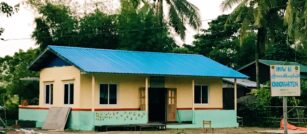
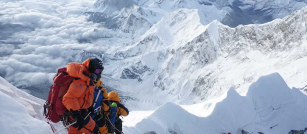
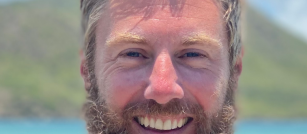


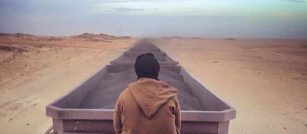
 As you know, blogging changed my life. I left Ireland broke, with no plan, with just a one-way ticket to Thailand
and no money. Since then, I started a blog, then a digital media company, I've made
more than $1,500,000 USD, bought 4 properties and visited (almost) every country in the world. And I did it all from my laptop as I
travel the world and live my dream. I talk about how I did it, and how you can do it too, in my COMPLETELY FREE
Ebook, all 20,000
words or so. Just finish the process by putting in your email below and I'll mail it right out to you immediately. No spam ever too, I promise!
As you know, blogging changed my life. I left Ireland broke, with no plan, with just a one-way ticket to Thailand
and no money. Since then, I started a blog, then a digital media company, I've made
more than $1,500,000 USD, bought 4 properties and visited (almost) every country in the world. And I did it all from my laptop as I
travel the world and live my dream. I talk about how I did it, and how you can do it too, in my COMPLETELY FREE
Ebook, all 20,000
words or so. Just finish the process by putting in your email below and I'll mail it right out to you immediately. No spam ever too, I promise!
